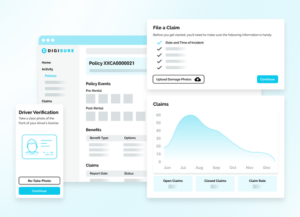Audience-First Approach
While the quality of the products you offer and their prices do matter, having an audience-first approach works for all successful ecommerce brands. One common theme is that all successful platforms have an audience they speak out to and build a community that people wish to be a part of.
One of the best examples of it is Sephora’s Beauty Talk (1). Sephora does a great job of making its audience feel connected with its online community and its podcasts, blogs, social media accounts, email lists, etc.

Speak about selling without selling! Their customers become their instant brand ambassadors, encouraging others to purchase their products. Notably, Sephora did nothing except create a platform where people can share.
Today, its marketing team uses the forum to find out its popular products, customers’ interests, and pain points. The brand also responds to any customer services issues and puts multiple customer relations operations into one channel (2, 3).
Moreover, when you have an audience and a flourishing community, you can also better understand your customers, including stuff like:
- Who are your customers?
- How do they use your offerings?
- What do they do for a living or for fun?
- Where do they live?
Are you looking to create a thriving community? Click here to learn more.
FOMO is Real
Only recently, we talked about FOMO leading to higher valuation of IPOs in our story about Mobikwik and Paytm. And guess what? The strategy works well for ecommerce brands too. It turns out, creating a scarcity of your products can be an excellent approach (4, 5).
A successful example is Zara.
Zara, incepted in 1975 by Amancio Ortega, is among the world’s most significant apparel retailers (6). The brand uses a unique blend of marketing tactics and growing customer needs.
Notably, unlike its counterparts, Zara doesn’t rely much on promotion advertising or marketing. Yet, it is pretty successful. And there is one major reason: FOMO.
Zara never makes too many products of a single design. It generates scarcity in the mind of its customers, which allows them to make quick purchasing decisions as they know it will soon be out of stock.
Another strategy of ZARA that’s worth mentioning here is that they take customers’ feedback quite seriously. The store employees note down what their customers want and quickly send those feedbacks to the design and production team to make designs as per their customers’ needs.
Their ecommerce platform also regularly analyzes what their shoppers are searching for, which helps them build brand loyalty. Of course, having an excellent product selection and trending styles per customer need is not enough to make its ecommerce a success. Do you know what Zara did? In 2018, after expanding its online operations to more than 41 countries (7), Zara announced that it would offer same-day deliveries in cities where it has established stores and ecommerce.
Its use of ecommerce with omnichannel marketing, a sophisticated stock management system, and technology to enhance shoppers’ experience gave Zara a competitive edge over its rivals. The brand also uses an automated marketing channel to send relevant and timely email notifications about customers’ orders, from order status updates to back-in-stock notifications.
In short, Zara used a combination of active but not reactive marketing tactics with big data and built a model where they anticipate customers’ needs and react fast. It proves that any brand can reach new heights if they put their mind and passion for business, customer service, and creativity.
Keep up With Trends
Knowing or even predicting trends can help ecommerce brands in a big way! And some top ecommerce brands already know it for sure.
Brands need to understand customer behavior and how it is changing with the growth of new shopping trends like social shopping or livestream shopping. One of the best examples of it is Michael Kors.
Back in 2017, the brand wished to inform its millennial customers about its new smartwatches range. It figured that modern audiences like watching vertical videos instead of horizontals ones since they hold their smartphones upright 94% of the time (8).
So, Michael Kors targeted young women with custom stories on Instagram that varied in length. Consequently, it saw a 24 times increase in its ad recall and 8.8x in favorability (9).
The company successfully predicted the surge of vertical video content and engaged their target audience, outperforming their competitors. You can also pay attention to your audience’s behavior and emerging trends and add them to your marketing campaigns to bring better results.
Invest to Foster Relationships
How can anyone miss Amazon when talking about successful ecommerce companies? Amazon took the marketplace industry by storm when it released its FBA, Fulfillment by Amazon policy. If you are not aware, it is an affordable program that allows sellers to sit back and count their money while Amazon does all the hard work.
Under the FBA program, Amazon stores products, package them, and even ships them directly to the customers. It has worked as a blessing for small and medium-sized businesses worldwide (10).
And that’s not all. Under the program, these sellers also get access to benefits like free shipping, Amazon Prime, international deliveries, easy returns, and much more.
While the numbers behind such a deal are significant, it allowed Amazon to shake hands with unending business owners worldwide, which helped it improve its overall marketplace, products range, among other things. At the same time, Amazon also empowered them and, to an extent, also made them self-sufficient, fostering an excellent relationship.
Read Also: Rising Trends: Wearable Birth Control, Print Media, and 3rd-Party Marketplaces
Targeting The Right Audience The Right Way
boAt, India’s top earwear audio brand, offers an astonishing collection of headphones, earphones, earbuds, and wireless speakers with different and unique designs. The company, which was initially selling its product on Walmart-owned Flipkart and Amazon, now has a successful ecommerce platform of its own with a presence in major offline retailing stores like Croma.
There are two major reasons behind boAt’s success: keeping a happy community and sending out the right message to its audience (11, 12, 13).
The brand calls its customers “boAthead.” boAtheads are all the people, mostly millennial buyers, who purchase any of their products and become a part of the ever-growing community and considering their number of sales, there are many.

boAt doesn’t portray itself as a brand that markets or sells consumer electronics. Instead, it calls its products lifestyle accessories. The brand sells its product as a part of people’s everyday fashion. And their strategy of integrating style with affordable prices has worked wonders for them. Did you know the popularity of boAt products forced big players like JBL to drop their prices to compete in the affordable audio market in India?
Some of the growth and marketing strategies boAt used include targeting popular fashion weeks like Lakme Fashion Week to display their products and creating brand awareness in smaller towns and cities by roping in brand ambassadors from the two most followed areas in the country: Cricket and Bollywood.
As per reports, the company sells over 8k units every day, which is about five units a minute. The boAt is an excellent example of how a company can shine even in a highly competitive segment by taking a new approach (that too with a regional tweak).
Utilize User-generated Content
As we described above with Sephora, brands can also use UGC, user-generated content, to promote their products. Reportedly, UGC is more influential compared to other branded content (14). Reports also suggest that more than 50% of potential buyers seek out UGC before making any purchase (15).
When a brand shares photos or videos created by users, it indicates to potential customers that the product meets people’s demands. Do you know what is even better? UGC can make your products feel even more sincere since they focus on a customer rather than the company.
In short, you can encourage your followers to create photos with your products, reviews, or even tutorials (since UGC is also about showing people how your products work), which can help you provide social proof of your offerings to your potential customers.
For instance, GoPro, a company that sells versatile cameras and accessories, encourages customers to share the photos and videos they capture and show them off on its Instagram page. It makes a perfect way for customers to spread the word about their skills across the company’s 15 million followers. At the same time, the brand gets the opportunity to offer its potential customers social proof (A win-win!). It is among the most reliable ways to ensure your customers that you and your products are trustworthy and also popular among others customers.
It brings us to our next point, authenticity. While UGC is important, brands need to make sure that they are authentic.
Secret Sauce of Tiktok is Authenticity
With TikTok reportedly making a comeback in India, it is time for brands to buckle up again and start preparing for ad campaigns on TikTok (or TickTock, perhaps).
Read Also: Can Tiktok Find its Way Back to India with a Changed Name?
As many of you may already know, Tiktok users don’t want to see professionally created videos that often come with elaborate post-production. The best-performing videos on Tiktok are usually those filmed at home with our phones.
That’s the main reason why people’s own homemade videos of themselves using a product often outperform the more professional content that the company itself makes on TikTok.
Marketing on TikTok is about building an accessible brand. It is not easy to sell the same product as others on the internet. However, if you can create a brand and become a trusted source for a product, you can succeed.
Don’t Underestimate the Power of Emails
Email marketing has become complex over the past few years, and today, it takes more than a thorough marketing tactic to get the desired results.
Interestingly, whether you are a SaaS founder or even a solopreneur, you may have already heard about the incredible growth of AppSumo (16).
The decade-old company founded by Noah Kagal is looking to make more than 74 million USD in annual revenue this year. They are presently looking for a new CEO who can take the company to cross a billion-dollar revenue mark (We are not sure if they have hired a new one already, correct us if you know). Yes, you heard us right, a billion dollars (17).
That’s not even the most interesting part of AppSumo’s success story. The most fabulous part is that the company makes a whopping ~50% of its yearly revenue from its email marketing.
And it made us sure that email marketing definitely works if you know how to do it right. And if you are not getting results, there are high chances that the strategy you are using right now is probably not as effective as you would like it to be.
So, how does AppSumo do it?
Notably, AppSumo has been approaching email marketing since day one! When it was started in 2010, their website had nothing at all except an opt-in email form with an incredible discount offer to stimulate visitors’ interest (18).

In short, AppSumo used marketing tactics like scarcity and exclusivity to get people to subscribe to the company’s email list.
By 2013, the company had over 150k email subscribers (19), and today it boasts more than 730k email subscribers.
Even though today, AppSumo has upgraded its website as per modern-day standards and business model, nothing has changed; their message and the opt-in form remained the same. It means the company never stopped increasing its email list!

Here is how you can follow AppSumo’s strategy to grow your mail list:
Growing an email list in any businesses’ early days is one of the most challenging things. However, AppSumo is proof that it is possible (20). The position of the opt-in form on your website is important when it comes to its effectiveness. Concurrently, it doesn’t mean you have to fill your entire website with opt-in forms. AppSumo has only one!
Here are some other courses of action you can consider:
- Promote viral giveaway campaigns to a limited number of people. When AppSumo ran its first giveaway in October 2012, 10-lifetime licenses of Dropbox, they grew their email lists to 200k people. Today, AppSumo does one giveaway every quarter.
- Leverage influencers to grow your email list.
- Send the total number of emails a week or month based on your audience and business.
- Ensure your emails are well-targeted, personalized, and valuable to your audience.
- Instead of being salesy and pushy, be concise and to the point. You can use witty tactics like humor, catchy subject lines, and a few CTAs.
- Take your segmentation for email marketing seriously!
- Make separate welcome sequence series for new subscribers, promotional email sequence, post-purchase email sequence, cart abandonment sequence, etc.
Closing Note
These are our takes on keys to growing a successful ecommerce business in 2021. What are you doing to grow your online store or marketplace? Are you using similar strategies as the companies we have mentioned above?
Reach out to us or share your stories with us in the comments below!











